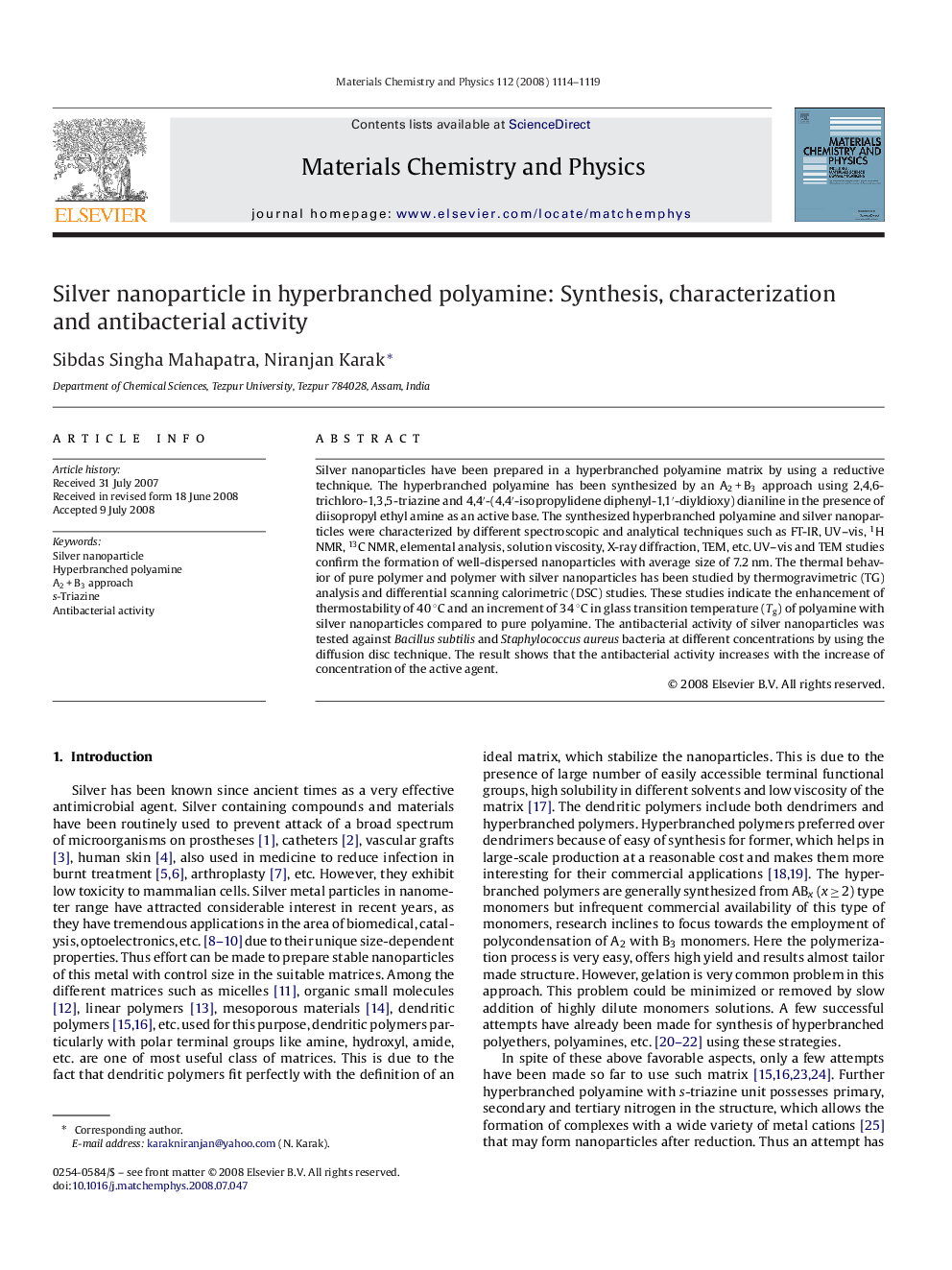| Article ID | Journal | Published Year | Pages | File Type |
|---|---|---|---|---|
| 1526690 | Materials Chemistry and Physics | 2008 | 6 Pages |
Silver nanoparticles have been prepared in a hyperbranched polyamine matrix by using a reductive technique. The hyperbranched polyamine has been synthesized by an A2 + B3 approach using 2,4,6-trichloro-1,3,5-triazine and 4,4′-(4,4′-isopropylidene diphenyl-1,1′-diyldioxy) dianiline in the presence of diisopropyl ethyl amine as an active base. The synthesized hyperbranched polyamine and silver nanoparticles were characterized by different spectroscopic and analytical techniques such as FT-IR, UV–vis, 1H NMR, 13C NMR, elemental analysis, solution viscosity, X-ray diffraction, TEM, etc. UV–vis and TEM studies confirm the formation of well-dispersed nanoparticles with average size of 7.2 nm. The thermal behavior of pure polymer and polymer with silver nanoparticles has been studied by thermogravimetric (TG) analysis and differential scanning calorimetric (DSC) studies. These studies indicate the enhancement of thermostability of 40 °C and an increment of 34 °C in glass transition temperature (Tg) of polyamine with silver nanoparticles compared to pure polyamine. The antibacterial activity of silver nanoparticles was tested against Bacillus subtilis and Staphylococcus aureus bacteria at different concentrations by using the diffusion disc technique. The result shows that the antibacterial activity increases with the increase of concentration of the active agent.
